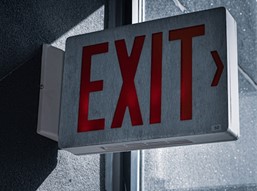In any workplace, prioritizing fire safety is paramount to protecting employees, customers, and assets. Choosing the right fire safety equipment is a critical step in creating a safe and compliant environment. Devin Doyle of Newport Beach offers practical advice on selecting and maintaining essential fire safety supplies for businesses of all sizes. From fire extinguishers, sprinklers, and smoke alarms to emergency lighting and evacuation signage, the following guide explains how to assess your organization’s needs and ensure compliance with fire safety regulations.
Assessing the Fire Safety Needs of the Business
Before purchasing any safety supplies, it’s essential to assess your workplace’s specific fire risks and requirements. Conduct a thorough evaluation of the premises, considering factors such as the size and layout of the building, the presence of flammable materials, and the number of occupants. Identify potential fire hazards and emergency escape routes and consult with fire safety professionals or local authorities for guidance on compliance with building codes and regulations.
Fire Extinguishers
Fire extinguishers are a fundamental component of any safety plan, allowing individuals to extinguish small fires before they escalate. When selecting these products for your business, consider the types of fires that are most likely to occur based on the materials present in your workplace.
Class A extinguishers are suitable for ordinary combustibles like wood and paper, while Class B extinguishers are designed for flammable liquids such as oil and gasoline. Ensure that fire extinguishers are easily accessible, properly maintained, and regularly inspected according to manufacturer guidelines and local regulations. It’s important to have a deep understanding of extinguisher class ratings and placement guides for your business location.
Smoke Alarms and Detectors
Early detection of smoke and fire is crucial for minimizing damage and protecting lives. Install smoke alarms and detectors throughout the building, including in hallways, offices, and common areas. Choose devices that are equipped with both smoke and heat sensors for optimal detection accuracy. Test smoke alarms regularly to ensure they are functioning correctly, and replace batteries or devices as needed to maintain reliable operation.
Commercial Sprinkler Systems
Installing commercial fire sprinklers provide a rapid response to fires, immediately dousing flames and minimizing the spread of fire, smoke, and heat within the premises. By swiftly containing fires, sprinkler systems help prevent extensive damage to property, equipment, and inventory, preserving valuable assets and reducing financial losses.
Moreover, they play a crucial role in ensuring the safety of employees and visitors, providing precious time for evacuation, and minimizing the risk of injuries or fatalities. Beyond the tangible benefits, the presence of commercial sprinklers also instills confidence among stakeholders, including customers, investors, and insurers, demonstrating a proactive commitment to safety and risk mitigation.
Emergency Lighting
In the event of a fire or power outage, emergency lighting plays a vital role in guiding occupants to safety. Install emergency exit signs and illuminated pathways to clearly mark evacuation routes and emergency exits.
Emergency lighting should be equipped with battery backup systems to ensure continued operation during electrical failures. Conduct regular inspections and testing of emergency lighting systems to confirm that they are functioning correctly and meet regulatory requirements.

Evacuation Signage
Clear and visible evacuation signage is essential for guiding occupants to safety during an emergency. Place signage strategically throughout the workplace, including near exits, stairwells, and assembly areas. Ensure that signage is compliant with local building codes and standards, with clear instructions and universally recognized symbols. Regularly inspect and maintain evacuation signage to ensure visibility and legibility at all times.
Training and Education
In addition to providing equipment, investing in employee training and education is critical for promoting a culture of safety in the workplace. Conduct regular fire drills and emergency response exercises to familiarize employees with evacuation procedures and the proper use of fire safety equipment. Provide frequent training on fire prevention techniques, hazard recognition, and emergency response protocols to empower staff to respond effectively in the event of a fire emergency.
Maintenance and Compliance
Regular maintenance and compliance monitoring are essential for ensuring the effectiveness of a business’s fire safety measures. Establish a schedule for inspecting and servicing extinguishers, smoke alarms, emergency lighting, and evacuation signage, and be sure to document all maintenance activities for compliance purposes. Stay informed about changes to fire safety regulations and standards and update the safety plan accordingly to maintain compliance and protect employees, the building and assets.
Conclusion
In closing, selecting the right safety equipment is crucial for protecting your business and employees from the risks of fire. By assessing your workplace’s specific fire safety needs, investing in high-quality equipment, and prioritizing employee training and education, business owners can create a safe and compliant environment that promotes peace of mind and confidence for everyone. Remember to regularly inspect, test, and maintain all safety equipment to ensure their effectiveness and compliance with regulatory requirements.

